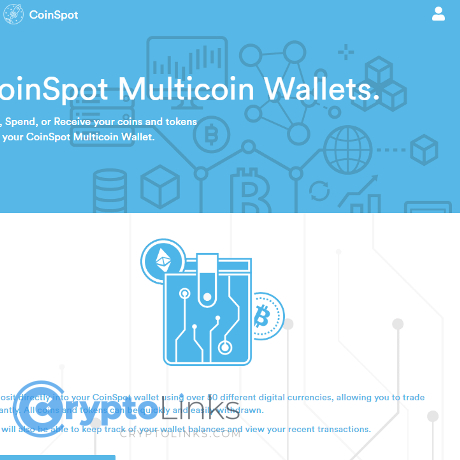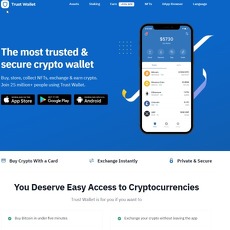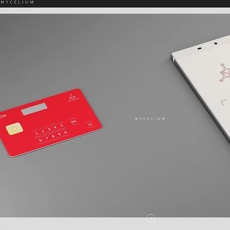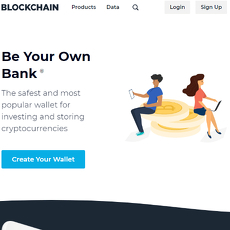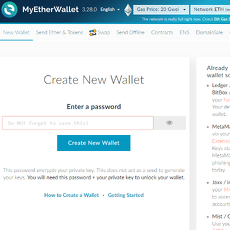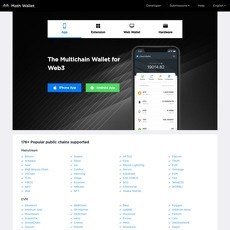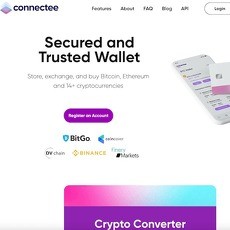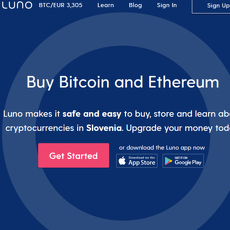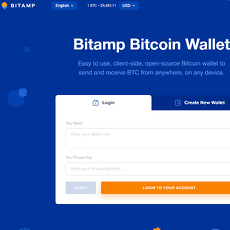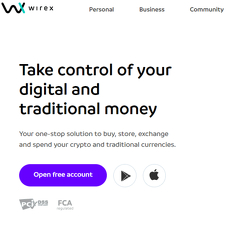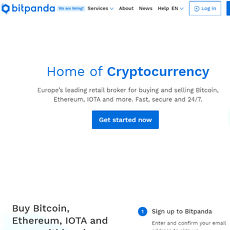Coinspot Multi Coin Wallets Review
Coinspot Multi Coin Wallets
www.coinspot.com.au
CoinSpot Multi Coin Wallets Review Guide: Everything You Need to Know (With FAQ)
Ever been overwhelmed by crypto wallet choices? One search and suddenly there are fifty different wallets waving for your attention—each promising to keep your coins safe, let you trade, or offer “the next-level security.” We’ve all heard stories about hacks, lost funds, or forgotten passwords. When you add real money into the mix, choosing the right wallet isn’t a casual decision—it’s everything.
If you’re in Australia or you want to know how CoinSpot’s Multi Coin Wallets compare in this crazy crowded market, you might be wondering:
- Is my crypto really safe on CoinSpot?
- How easy is it to use?
- Will I get stuck with fees or run into issues getting my funds out?
- How does it stand up to the big names (and my privacy paranoia)?
Here’s everything you need to know, straight up—no complex jargon, no wild promises. Just a clear look at CoinSpot’s Multi Coin Wallets and the answers everyone is actually searching for.
Why Picking the Right Crypto Wallet Matters
Forget gold under your mattress—we’re in the era of digital assets where one bad click or shady app could mean everything disappears. According to Chainalysis, over $3.8 billion was stolen in crypto hacks in 2022 alone. Even small slip-ups—like sending coins to the wrong address or trusting a sketchy wallet—happen every single day.
When you’re storing Bitcoin, Ethereum, or that dog-themed coin you’re hopeful about, you don’t just want a wallet that “works.” You want:
- Real security: So you can sleep at night, even if you’re not a tech genius
- Usability: Because nobody wants to deal with clunky interfaces or 20-step withdrawal processes
- Flexibility: You might hold five coins today, but what about when you expand your portfolio?
No wonder picking a wallet can feel like walking through a minefield—one wrong move, and it’s not just a bad day...it’s your investment gone!
What This Guide Will Solve for You
Let’s cut through the noise. By the time you finish reading, you’ll know exactly what’s unique about CoinSpot’s Multi Coin Wallets and how they address the big concerns:
- Are they actually safe?
- How does CoinSpot make life easier (or harder)?
- What does the user experience really feel like?
- Can you cash out to your Aussie bank account fuss-free?
- Are there any hidden fees or roadblocks?
And—because I see these questions every day—I’ll cut right to what you actually need to know, minus the fluff.
The Popular Questions Aussies Ask
Let’s be real, whether you’re surfing crypto Reddit threads or chatting at a local meet-up, the same questions keep coming up:
- Is CoinSpot’s wallet safe, or am I risking my stash?
- How do I get my cash out and into my bank?
- What are the sneaky fees I should watch out for?
- Is CoinSpot’s wallet any better than all those other options?
If any of those are on your mind, you’re exactly where you need to be. Ready to find out what CoinSpot Multi Coin Wallets actually are, who should use them, and whether they stack up? Get comfy, because I’ve got the insider scoop coming up next—spoiler: you might be surprised which features set them apart.
What Is CoinSpot Multi Coin Wallets?
Imagine opening an app and seeing all your crypto in one place—secure, neatly organised, and easy to use. That’s the story behind CoinSpot’s Multi Coin Wallets. Launched on the back of CoinSpot’s trusted reputation in Australia (they’ve been around since 2013), these wallets aren’t just about basic storage. They are designed to be a one-stop solution for Aussies who want to hold, manage, and move their digital coins without juggling five apps or worrying about technical headaches.
In simple terms, a Multi Coin Wallet from CoinSpot lets you store heaps of different coins—think Bitcoin, Ethereum, and hundreds more—all under one secure roof. There’s no need to fuss with multiple wallets or jump through hoops to track your assets. You get everything together, with the same security and reliability CoinSpot is known for in the Aussie crypto community.
"The beauty of a good wallet isn’t about how much it can hold—it's about how confidently you sleep at night knowing it’s safe."
Supported Coins and Features
This is where CoinSpot shines. You’re not just limited to Bitcoin or Ethereum—here’s what you can actually store:
- 370+ cryptocurrencies supported, including the major players (BTC, ETH, ADA, XRP, and more), all the way to newer altcoins catching hype.
- Regular updates: New coins and tokens are added often, reflecting what’s hot in the market.
- Integrated buy, sell, and swap: You don’t need to move your coins around for basic trading. It all happens within your CoinSpot wallet.
- Built-in portfolio tracking: Want to know how your crypto is performing at a glance? It’s right there on the dashboard.
Compare that to old-school wallets like Exodus (around 300+ coins) or MetaMask (mainly Ethereum and compatible networks, but not Bitcoin natively)—CoinSpot gives you quite a bit more coverage, especially if you’re looking to diversify without the hassle.
User Experience: Look, Feel & Ease of Use
Alright, nobody wants a wallet that feels like you need an IT degree to use. CoinSpot’s design is refreshingly simple:
- Clean interface: Bright, straightforward, no clutter or confusing menus.
- Sign-up process: Takes just minutes. Email, password, quick ID verification, and you’re set.
- Mobile app magic: Available on both iOS and Android, the app has all the features of the website, just pocket-sized. You can check balances, move coins, or cash out while waiting for your coffee.
- Instant access: As soon as your account is active, your wallet is ready. No need to mess with private keys or backups right out of the gate (though this comes with its pros and cons—more on that later).
A survey by Finder found that almost 20% of Aussies own crypto, but the #1 thing stopping more folks from joining in is “it seems too complicated.” CoinSpot’s wallet feels like it’s actually answering this problem head-on with a handy, no-nonsense setup.
Accessibility and Who It’s For
Let’s talk about who really wins with a CoinSpot Multi Coin Wallet. Honestly, it’s beginner-friendly enough for total newbies—even your nan could use it. But it isn’t just for the new folks. Here’s who’ll get the most from it:
- Crypto beginners who want something that “just works” without complicated set-up or having to Google every feature.
- Casual HODLers who check their portfolio every now and then but don’t want to worry about hardware devices or handwritten seed phrases.
- Active traders who need seamless moving between different coins and fiat with zero downtime and hassle.
This won’t replace a hardcore hardware wallet for big-money holders seeking extreme self-custody, but for most Aussies—especially those dipping toes in, growing a portfolio, or just looking for a mix of convenience and trust—it’s a solid match. That said, pros will always remind you: “not your keys, not your coins” still applies if you’re truly aiming for ultimate control.
So, you’ve seen what sets this wallet apart, but the million-dollar question is: just how safe is your crypto with CoinSpot? Is their security actually airtight, or is there a hidden risk? Stick around because next I’ll shed light on the exact security protocols behind CoinSpot and what they really mean for your coins…
How Safe Is CoinSpot Wallet? (Security Overview)
Let’s not sugarcoat it: in crypto, safety isn’t just a “nice to have”—it’s the line between sleeping easy and waking up to an empty wallet. Security should always be your first checkbox, whether you’re putting $50 or $50,000 worth of assets online. I keep a close eye on what makes a wallet trustworthy—so here’s exactly how CoinSpot approaches keeping your funds safe from those headline-making hacks.
Multi-Layer Security Explained
CoinSpot isn’t just slapping on a password and calling it a day. They use a bundle of security features—the kind of layers you’d want around any digital vault. Here’s what you actually get when you’re holding your coins here:
- Two-Factor Authentication (2FA): Every single withdrawal or critical action requires you to verify via an extra code on your device. Even if someone guesses your password while you’re asleep, they’re stuck at the gate without your phone.
- Email Confirmations: Before moving funds or making crucial changes, you get a security email. This way, if something weird is happening, you have a direct heads-up—a real lifesaver if your login details ever get phished.
- Withdrawal Protections: CoinSpot’s got time locks, withdrawal address locks, and a hands-on review process for unusual transactions. Some Aussie users have even shared stories in forums saying their account was flagged for extra checks after suspicious activity—frustrating at the moment, but way better than losing your stack.
On top of all that, CoinSpot stands out as an Australian exchange with ISO 27001 certification. In plain English: this is an internationally recognized gold standard for how they store, handle, and protect user data. There aren’t many platforms in crypto—especially exchange wallets—that bother going this far.
"Security isn't expensive, it's priceless. You only realize its true value when it's gone."
How CoinSpot Stacks Up Against Other Wallets
There’s no perfect wallet—each option balances convenience, access, and security differently. I’ve used software wallets like Exodus, browser wallets like MetaMask, and even good old hardware wallets (my Ledger is almost an old friend by now). Here’s what really counts:
- Exchange Wallets (like CoinSpot): Your keys are controlled by the service—but you get pro-grade protection, tight access control, and quick recovery if you forget things.
- Software Wallets (Exodus, MetaMask): You own your keys, but you’re responsible for protecting your device—and malware can ruin your day. If you forget your backup phrase… game over.
- Hardware Wallets: Ultimate control and top-end air-gapped security. Downside? Lose the device and backup, and not even NASA can help you get your coins back.
With CoinSpot’s policies, there’s a big layer of protection (ISO 27001, insurance provisions, account monitoring), and for many users—it’s a safety net you just don’t get with pure self-custody. According to a Statista study, centralized exchanges are still a target, but the success rate of massive hacks is way down on certified exchanges in recent years—just a little peace of mind for those nervous about “leaving coins on the exchange.”
How to Keep Your Wallet Extra Safe
Here’s the honest truth: No matter what security CoinSpot (or any wallet) packs in, you are still your own best first line of defense. Some tips to lock things down even tighter:
- Use a strong, unique password that you never use anywhere else—password managers help here big time.
- Turn on all security options—2FA, email confirmations, even extra withdrawal PINs. Don’t be lazy on these.
- Regularly check your account activity for anything odd (logins, IPs, device changes).
- Don’t click weird links: Phishing is still the #1 way crypto gets stolen. Bookmark the official CoinSpot site and double-check URLs always.
Is all this bulletproof? Nothing is. But like locking your front door and having a big dog, every extra step makes you far less attractive to those digital crooks.
Now, wondering exactly how to get your CoinSpot wallet set up, funded, and moving coins? Stick around—the next section walks you through, step by step, so you know precisely what to do and what to expect!
How Does CoinSpot Multi Coin Wallet Work? Step-by-Step
When it comes to digital wallets, the first thing on most people’s minds is: “How the heck do I actually use this thing without messing up?” CoinSpot’s Multi Coin Wallet is built to be simple—even if you’re still figuring out which way to swipe on your phone. Let’s break down exactly how you get started, from moving your first dollar in, to making your first trade, to getting your cash out when it’s time to pay the bills.
"Do not save what is left after spending, but spend what is left after saving." - Warren Buffett
(You’ll see why that’s important in just a second…)
How to Deposit and Store Crypto
Getting your crypto into CoinSpot is shockingly straightforward. The platform doesn’t try to trick you with confusing menus or hidden settings.
- Sign up (or log in): Head to the CoinSpot site or app, punch in your details, and run through ID verification. This is standard for any Aussie-regulated exchange—think of it like setting up a bank account, but way faster.
- Go to “Wallets”: Here’s your home base for every coin you hold. Want Bitcoin, Ethereum, or even meme coins? They’re all stored here under one dashboard.
- Choose the coin you want to deposit: Click, and CoinSpot generates a wallet address (e.g., for Bitcoin, it’ll look like a random jumble of letters and numbers). Copy this address.
- Send crypto in: Paste that address into the wallet you’re sending from (like another exchange or a hardware wallet), and confirm the transaction. Funds usually appear in your CoinSpot wallet within minutes—for major coins, expect near-instant.
- Track it live: As soon as your coins land, you’ll see them in your balances. The dashboard updates in real-time, and you get visibility on each asset’s current worth.
Fact: According to a 2024 Finder report, over 1 in 4 Aussies buying crypto say ease of deposit is the single most important factor. CoinSpot pretty much crushes this category—no hoops, no headaches, no teeny fine print.
How to Send, Swap, or Withdraw
Moving your coins, making swaps, or just pulling your profits out—this is where the magic (and sometimes mistakes) happen. But here, it’s set up for everyday people, not rocket scientists.
- To send crypto: Go to your wallet, pick the coin, hit “Send.” Fill in the destination address—double check it, because sending to the wrong address means your coins are gone forever. You’ll always get an email confirmation step, so you’re protected against fat-finger errors.
- To swap crypto: Want to change BTC to ETH, or maybe grab some Solana? Use the instant swap feature—literally a few taps, and you’ll see the converted coins land in your dashboard right away. This is huge for active traders or anyone keeping their portfolio balanced when the market swings.
- To withdraw to fiat (AUD): In your wallet, tap “Withdraw AUD.” Enter your bank details (once; CoinSpot remembers them for you). The process is all online, and payouts often hit your bank within 1 business day—sometimes in just a few hours.
Here’s a tip: I once helped a friend who was convinced they’d lost their coins because they waited 20 minutes for an Ethereum withdrawal. It turns out, sometimes the Ethereum network gets clogged (we’ve all seen gas fees spike). CoinSpot shows you real-time status, so you never have to wonder where your money is hiding.
Minimum Deposit, Withdrawal, and Trading Amounts
Every crypto platform has its minimums—because nobody wants to process a $0.01 transfer (imagine the headache for accounting!). Here’s what you need to know right now about CoinSpot’s limits:
- Minimum deposit (bank/PayID/crypto): AUD $1 (that’s right, just a buck for bank and PayID). For crypto, it varies by coin, but it’s usually incredibly low—perfect if you’re trying things out or running on a shoestring budget.
- Minimum trade: Generally AUD $1. The platform lets you play small or go big—it’s all your call.
- Minimum withdrawal (AUD): AUD $5 to your Aussie bank account. For crypto withdrawals, each coin has its own minimum—like 0.0001 BTC for Bitcoin (which, as of the last check, is well under $10 AUD). If you need specifics, their up-to-date fee page lists every detail.
Compare that to old-school banks, where you’re lucky if you can even process micro-deposits without a fee. Here, CoinSpot aims for accessibility. It’s friendly for total newbies and penny-pinchers, but also smooth for power users slinging bigger volumes.
When you boil it down, CoinSpot’s wallet structure is about making crypto simple, fast, and almost frictionless—without letting safety or control slip. But is that enough? Do these easy steps hide any sneaky catches? I’ll break down what’s amazing (and what’s not-so-great) in the next section.
Ever wondered what down-to-earth strengths—or serious trade-offs—really set CoinSpot apart? Let’s check out the pros and cons that actually matter.
What Are the Pros and Cons of CoinSpot Multi Coin Wallets?
The Best Bits
Let’s keep it real—there are some things about CoinSpot’s Multi Coin Wallets that make it hit the sweet spot, especially if you’re in Australia or just want an easy, no-headache setup.
- Ridiculously Easy to Use: The interface is about as friendly as it gets. I’ve watched total crypto newbies (my cousin included!) get their first Bitcoin and Ethereum stored in minutes, no confusing screens, no tech headaches. The mobile app makes it easy to track, buy, and sell on the go.
- Choose From 400+ Coins: Whether you’re into old-school titans like BTC and ETH, or looking to try smaller gems like VeChain or AVAX, CoinSpot’s wallet means almost everything is accessible in one spot. No juggling a dozen apps or losing track of what’s where.
- Proudly Aussie, Made for Aussies: Local customer support, compliance with Aussie laws, and easy integration with banks here. For anyone in Oz tired of dealing with foreign platforms, it feels… safer.
- Top-Tier Security: I’m not just talking strong passwords. CoinSpot’s ISO 27001 certification isn’t fluff—it shows they take processes and risk management as seriously as the big banks. In an industry known for its fair share of chaos, that’s rare.
"Peace of mind isn’t something you stumble on—it’s built, brick by brick, feature by feature."
The Drawbacks
Okay, time for the truth—there are some pains and tradeoffs you need to know. Anyone who says there are “no cons” with any wallet isn’t being straight with you.
- Not Your Keys, Not Your Coins: The golden rule of crypto—if you don’t control your private keys, you’re basically trusting someone else with your assets. CoinSpot holds the keys. That’s great for convenience and protection from some errors, but not if you want absolute autonomy or to sleep at night “off the grid.” Just Google “exchange hacks” and you’ll see why some folks stick to hardware wallets only. (According to a 2023 Chainalysis report, centralised exchanges have historically been top targets for hacks—worth thinking about.)
- Less Control & Flexibility: Unlike MetaMask or hardware wallets, CoinSpot sets the rules—so you can’t access testnets, custom tokens, or DeFi dapps. For 99% of Aussies that’s fine, but if you’re keen on being a DeFi degen or running obscure chains, you’ll feel boxed in.
- Geo-Restrictions: CoinSpot only fully supports Australian users. If you plan to travel, relocate, or you’re not in Oz yet, you’ll need to look elsewhere. Not ideal for global nomads or those with international moves in mind.
When Is It a Good Choice?
Let’s get specific so you can figure out if this wallet is your new crypto home or if you should pass.
- Great for:
- Beginners wanting clarity, not confusion
- Anyone looking to store and trade a wide range of coins in one place
- Aussies who want local support and easy AUD withdrawals
- People who don’t want to manage complex security setups themselves
- Not ideal if:
- You want complete and total control—like holding your own private keys
- You’re big into ultra-niche coins, testnets, or DeFi projects outside CoinSpot’s supported ecosystem
- You move countries often or need global flexibility
Think about it like this: if you want crypto “training wheels” with lots of safety nets, it fits perfectly. If you’re ready to be your own bank... it’s not quite that.
There’s a lot more to picking a wallet than just the pros and cons—let’s compare CoinSpot to some of the most talked about wallets on the planet and see how it stacks up in the real world. Which wallet comes out on top for your actual needs? You’ll want to check out what’s next!
CoinSpot vs Other Crypto Wallets
If you’ve ever gotten lost scrolling reviews on Reddit, you know the endless debate: “Should I use an exchange wallet like CoinSpot, install Exodus or MetaMask, or do I really need to splurge on a hardware wallet?” Let me break it down in plain language, using real-world examples so you can actually picture what life looks like with each option.
Software Wallets vs Hardware Wallets
There are two big teams out there—software wallets and hardware wallets. Each has its fan club, for good reason.
- Software wallets (think CoinSpot, Exodus, or MetaMask) run right on your browser or app. Super convenient, always at your fingertips, but you are trusting a system connected to the internet. You get fast access, notifications, and coin management without much effort. Great for daily use, trading, or when you just want to peek at your portfolio mid-lunch break.
- Hardware wallets like Ledger or Trezor are the Fort Knox of crypto. Your keys stay offline, locked down even if your laptop catches a virus. But honestly, they’re less “tap and go,” and more “fetch, plug, unlock, use.” Perfect for serious HODLers or anyone storing big sums.
A University of Cambridge study even found that around 60% of crypto owners still prefer hot wallets for small, frequent transactions, while hardware wallets are a top pick for long-term, high-value storage. The trade-off is always between convenience and ultimate security.
“The best wallet is the one that fits your life, not just your fears.”
Why Choose an Exchange Wallet?
Several folks ask, “Isn’t it risky keeping coins in an exchange wallet?” The short answer is: it can be, if you treat it like a forever home. But as your everyday wallet, it packs some unique perks:
- Instant access to trading and swaps. You don’t get seamless buying/selling with a cold wallet.
- Automated tax reporting, portfolio tracking, and Aussie-friendly features—no extra plugins or spreadsheets required.
- Lost your phone or login? You can usually recover access with ID verification (which is way less stressful than losing a hardware wallet’s recovery phrase).
- Simplicity for beginners: No need to fuss over private keys or firmware updates. It just works out of the box.
But, the catch: you don’t hold your private keys. It’s a “custodial” solution, so ultimately, it’s about how much you trust CoinSpot’s security and your own habits (like not sharing passwords or falling for phishing emails).
What About Paper Wallets or Custody Solutions?
Thinking of going ultra-old school? Paper wallets—literally printing your keys on paper—are a thing for the ultra-cautious or those hiding serious stacks. They’re totally offline but one coffee spill or lost slip can mean game over. For institutional-level investors, there’s professional custody—think cold storage, physical vaults, insurance, the whole works.
Let’s get real: Most everyday users don’t need to go this far, but it’s nice to know those tough-guy options exist. I’ve seen some people use paper or metal wallets just for that “ultimate backup” feeling, but for most, it’s overkill. If you’re just after speed, notifications, or hands-off management, CoinSpot makes a lot more sense.
Curious about what extras you actually get with CoinSpot besides simple storage? Get ready, because I’m about to show you some nifty features and tools that you might’ve missed—stay tuned for the next section! What if you could manage taxes, trade instantly, and track everything in one place? Sounds too good to be true? You’ll want to see what’s next…
Key Features & Tools of CoinSpot Multi Coin Wallets
Ever wish you had a crypto wallet that does more than just “store and forget”? The reality is, convenience and powerful features can make the difference between a smooth ride and a bumpy one as the crypto world gets busier and more complex. CoinSpot’s Multi Coin Wallets pack a few smart tricks that make all the difference—especially if you actually use your crypto, not just sit on it.
Built-In Swap and Trading Features
Let’s get real: At some point, everyone wants to trade—maybe ETH for BTC, maybe just swap a little SOL to see what the fuss is about. With CoinSpot, you don’t have to jump through hoops or transfer funds to another platform … it’s all right there.
- Instant Buy & Sell: That “Should I Get In Now?” impulse is less risky when you can buy or sell instantly. CoinSpot lets you do that with over 420 coins. Just a couple of taps, and your assets update live in your dashboard.
- Direct Swaps: Swapping Bitcoin for Ethereum or Dogecoin—no external wallet or complicated steps needed. The swap tool makes it simple (and if you’re like most people, fewer steps means fewer errors). According to a 2023 Statista survey, 41% of Australian crypto holders said ease of use in swapping assets is a top priority, and CoinSpot clearly keeps that in mind.
- Order Options: Sometimes you want more control. CoinSpot’s Advanced Order tools (like Market, Limit, and Stop orders) are all right there, letting you plan ahead or pounce on a price move without leaving your wallet.
“In crypto, every second and every cent counts. A wallet that keeps you close to the action is worth its weight in gold.”
Extra Tools You Might Find Handy
Sure, storing coins safely is the point of a good wallet. But managing them efficiently? That’s the next level. Here’s where CoinSpot quietly shines:
- Live Portfolio Tracking: See all your coins, values, and changes in real time, automatically updated when markets jump or dip. Visual charts make it obvious, even if you’re not a spreadsheet nerd.
- Tax Reporting Tools: Taxes on crypto can be a nightmare in Australia. CoinSpot integrates an automatic tax calculator that logs every trade, withdrawal, and swap—so everything’s tracked for ATO-friendly reports at the end of the year.
- Mobile Alerts & Notifications: Set price alerts, get notified about wallet security changes, or track deposits and withdrawals as they happen so you’re never caught off guard.
- Deposit & Withdraw Across Multiple Methods: Support for PayID, POLi, BPAY, and direct bank transfer means you aren’t stuck waiting on slow payouts or worrying about missing a window.
- Secure Account Controls: Change your pin, update your security settings, or view login history—all inside the wallet UI. Total transparency is rare and it’s comforting for those late-night “is my account safe?” moments.
Some people might shrug off features like tax tracking or real-time alerts, but let’s be honest: the last time the market went wild, how much would you have paid to get immediate, clear info all in one place? It’s tools like these that actually pull their weight when things get hectic.
Thinking about making your next move, or wondering just how all these features stack up to the top competition? Or maybe you’re just itching to find out what real people ask about CoinSpot wallets—and what the answers are? Trust me, the questions only get better and I’m about to answer the biggest ones next. Which one’s on your mind right now?
Frequently Asked Questions (FAQ) About CoinSpot Multi Coin Wallets
Let's get straight to the things people are Googling, dropping in Reddit threads, and asking me personally. If you’re thinking about parking your coins with CoinSpot, here’s what you probably want to know—answered as honestly as possible, with real-life details, so you can actually make a confident choice.
How safe is CoinSpot wallet?
One of the first things people ask: “Is my crypto really safe on CoinSpot?” That’s a fair question, especially with news of hacks or breaches popping up all over crypto news.
CoinSpot packs quite a bit into their security setup, and here’s what’s important:
- ISO 27001 Certified: This is basically the gold standard when it comes to information security. You can check the official ISO site to see what it means (think of it like a global stamp showing CoinSpot meets strict controls).
- Multi-factor authentication (MFA): Adding extra steps like an SMS code or app-based OTP whenever you try logging in or withdrawing funds. Even if someone snags your password, they’d also need your phone or app code.
- Email confirmations for withdrawals: This makes it way harder for someone to sneak your crypto out unless they also break into your email.
- Track record: CoinSpot hasn’t had a public, major hack that customers need to worry about—not something every exchange can claim. Their ISO certification was publicly announced, and has helped raise overall confidence.
What about going the extra mile? I always recommend enabling every security feature available—think strong passwords, regular password changes, and confirming withdrawal settings. Want more ways to keep safe? Check Cryptolinks’ advanced wallet safety guide—there’s always something else you can lock down.
How do I get my money out of CoinSpot?
Withdrawing from CoinSpot is pretty user-friendly, even if you’re just starting out:
- Log in to your CoinSpot account, and go to “Wallets”.
- Select your AUD wallet if you’re cashing out to Australian dollars.
- Click “Withdraw” and enter your bank account details. (Make sure your bank account matches your CoinSpot name—it’s a regulatory thing.)
- Enter the amount and confirm with the verification steps (usually an email or SMS case).
Payout times: CoinSpot processes AUD withdrawals almost always the same day—just check that it’s a business day before 2pm AEST. Some banks might add a small delay, but for most Aussies, you’ll have cash in your account within a day or so. Crypto withdrawals follow the network speed—BTC, ETH, and friends can swing from a few minutes to an hour, depending on congestion.
What is the minimum deposit or trade amount?
If you’re watching your budget or want to test-drive the wallet before going all in, CoinSpot’s minimums are actually beginner-friendly:
- Minimum AUD deposit: $1 by PayID or Direct Deposit. POLi and BPAY have a $5 minimum.
- Minimum trade: $1 worth of cryptocurrency—so even a tiny Bitcoin slice if that’s all you want.
- Minimum withdrawal: $5 to your bank for AUD. Crypto withdrawals depend on the coin (usually enough to cover the network fee).
These small minimums mean you don’t need to risk much just to test the waters—smart way to poke around before leaving life savings on any exchange.
Which is the safest crypto wallet to use?
This is where things get a little more personal—there’s no “one size fits all” when it comes to wallet security. CoinSpot is solid for everyday use if you want fast trades and easy access, but the absolute safest crypto wallets are hardware wallets, like Ledger or Trezor. They keep your keys physically out of hackers’ reach, unless you hand them over or get tricked with phishing.
Meanwhile, software wallets (such as Exodus or MetaMask) give you direct key control, but still risk online hacks if your computer gets infected. If you’re handling big money or holding for years, a hardware wallet is your best bet.
If you’re deciding between convenience or max security, it’s worth taking a look at my deep-dive on the best wallets at Cryptolinks’ wallet comparison page—I’ve researched and listed every wallet type, from easy exchange wallets to ultra-secure hardware options, and even some old school paper wallets if you’re curious.
Now, you know the basics—but how do you actually use all this knowledge to pick the right wallet for your next Bitcoin buy or altcoin HODL session? Are CoinSpot’s wallets good enough for your stack, or does it make sense to separate your holdings? Don’t make a move just yet… The next part brings everything together and helps you make the smart, safe choice for your crypto adventure. Ready?
Should You Use CoinSpot Multi Coin Wallets? My Verdict
Alright, this is the real question at the end of the day: Should you trust CoinSpot’s Multi Coin Wallets with your crypto stash, or are you better off looking somewhere else?
Here’s my straight-up take, with no sugarcoating.
My Personal Tips for Staying Secure
If you’re planning to use any exchange wallet—including CoinSpot—security is always the name of the game. The best wallets in the world are only as safe as your habits. That’s something many people overlook, and unfortunately, it’s usually only after something goes wrong that we start wishing we’d done things differently.
- Always set up Two-Factor Authentication (2FA). Don’t skip this. Even if someone figures out your password, 2FA can save you. It’s a simple layer, but it makes hacking a nightmare for thieves. Studies have found 2FA can block up to 99.9% of automated attacks (Microsoft, 2019).
- Never use your main email or a weak password. If you reuse credentials or pick something easy to guess, all bets are off. Go with a password manager and create something totally unique for CoinSpot.
- Be paranoid with phishing emails and messages. I get fake emails all the time that try to look like they’re from major exchanges. Always check the sender and don’t click on suspicious links. Bookmark the CoinSpot site or use the official app only.
- Withdraw what you can’t afford to lose. As a general rule, don’t leave massive amounts on any exchange wallet. If you’re holding for the long term, consider something like a Trezor or Ledger hardware wallet for your “savings,” and use CoinSpot for trading or smaller balances.
- Keep backup codes and account recovery steps somewhere safe. Not your phone, not your everyday computer—ideally, written down and out of sight.
None of these are complex, but trust me, every single person who’s ever lost coins wishes they’d done it this way!
More Resources: Learn Before You Store
I can’t emphasize this enough: research is your best friend. You don’t want to make your wallet decision based on one review—mine included. Here’s what I always recommend to anyone dipping their toes in:
- Check out user reviews, not just the glossy marketing page. Real feedback (on sites like Trustpilot) can alert you to problems or hidden perks.
- Compare features and security info side by side. I keep an always-updated list of the best crypto wallets for every need—totally unbiased, and I update it when things change in the industry.
- If you’re not sure about something, keep asking questions. Communities on Reddit, Twitter, or even the Cryptolinks Telegram group are full of people answering the very same wallet questions you have.
- Don’t trust screenshots and testimonials alone. Anyone can fake these. Look for objective reviews, bug bounty programs, and a solid security track record.
Remember, you’re not just storing some digital coins—you’re protecting your hard-earned money. So, take a few extra minutes before you make your pick.
Final Thoughts: Is CoinSpot Right for You?
So, here’s how I see it. If you want a wallet that’s simple, Aussie-friendly, and comes with the bonus of being able to buy, sell, and swap in the same place, CoinSpot Multi Coin Wallets are a solid call. They put security front and center, and their ISO 27001 certification is more than just a badge—it's a legit commitment to good security hygiene. If you’re new to crypto, or just want everything under one roof, you’ll probably love the fuss-free experience.
On the other hand, if you hold massive amounts, need to self-custody your private keys, or plan to store niche tokens outside of the big names, you’re still better off with a dedicated hardware wallet or something self-custodial like MetaMask or Trust Wallet. Remember that old crypto saying—“not your keys, not your coins.” Yep, it still matters.
Bottom line: use the tool that actually fits your life. Keep your guard up, double check the finer details, and if you ever feel unsure, look up a second opinion or two before you click “deposit.”
Hungry for more straight-talking crypto insights or wallet guides that cut through the noise? Keep exploring the Cryptolinks News blog for up-to-date guides, real reviews, and the tips I wish someone had given me when I first started stacking sats.
Stay safe, stay curious, and don’t let FOMO rush your decisions.

